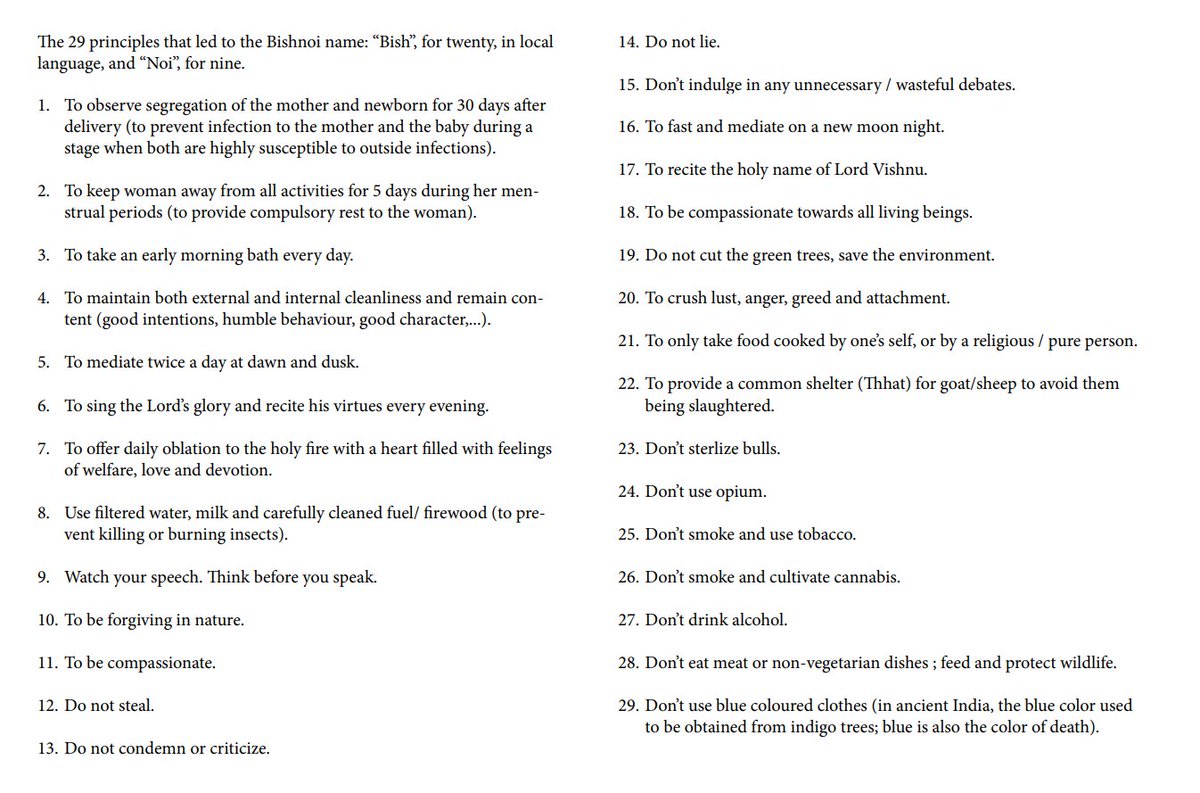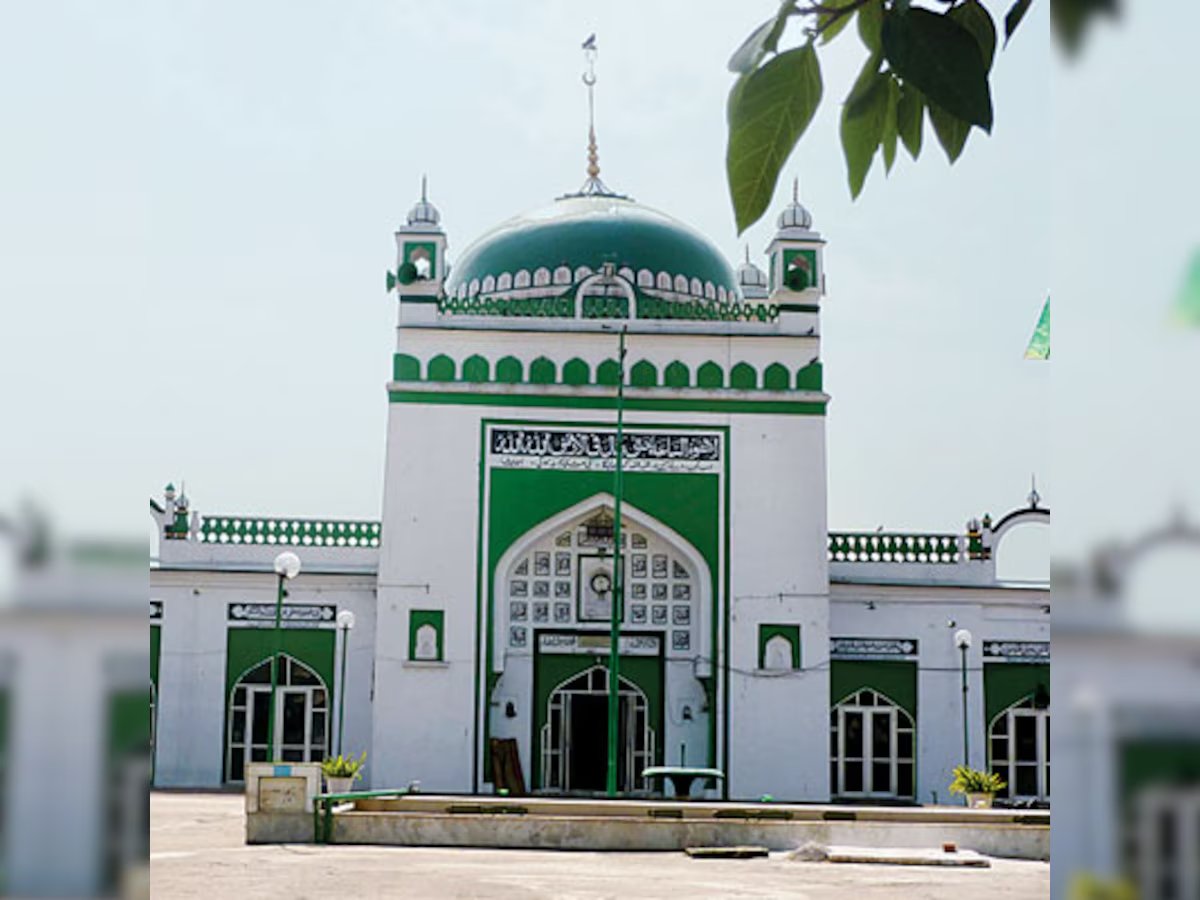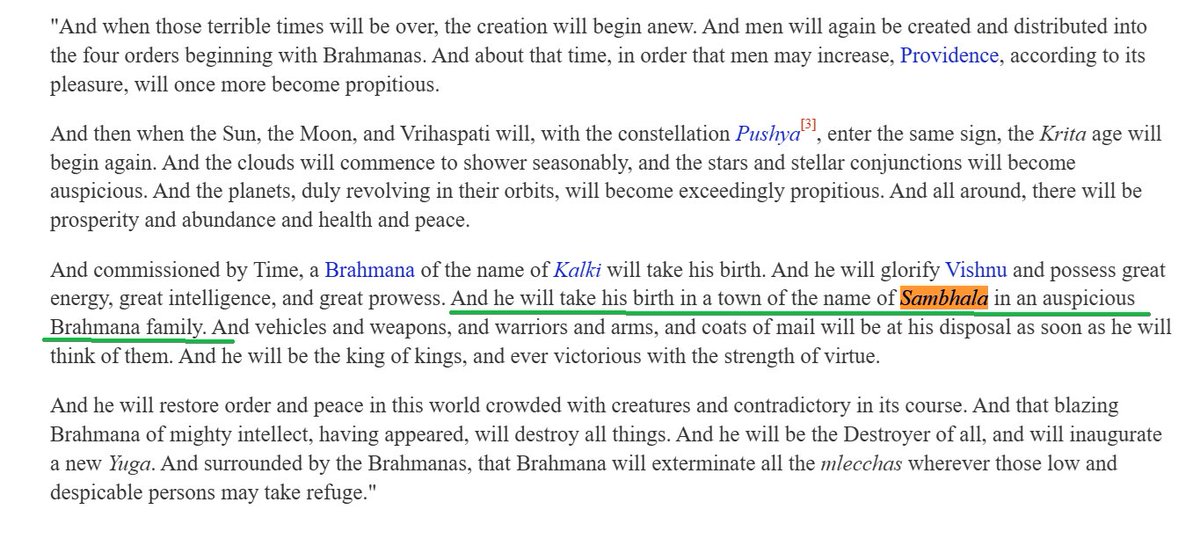BISHNOI
Who are the Bishnoi?
Bishnoi is a Vaishnavite sect within Hinduism.
They are the world's FIRST environmentalists who led humankind's earliest battles to protect forests and conserve wildlife.
Throughout their history, they fought numerous battles and staked their lives to protect forests and wildlife. They are directly responsible for the survival of many species.
This is a thread about the unknown history of Bishnois. Read on 🧵
Who are the Bishnoi?
Bishnoi is a Vaishnavite sect within Hinduism.
They are the world's FIRST environmentalists who led humankind's earliest battles to protect forests and conserve wildlife.
Throughout their history, they fought numerous battles and staked their lives to protect forests and wildlife. They are directly responsible for the survival of many species.
This is a thread about the unknown history of Bishnois. Read on 🧵

The Bishnoi sect was founded in 1485 CE by Guru Jambheśvara. He was born in 1451 CE to a Panwar Rajput family in Western Marwar, Rajasthan.
At 25, Jambheśvara was deeply moved after witnessing a severe drought that devastated Marwar. He saw villagers cutting down trees and hunting animals to survive. Throughout the famine, he provided free food to the poor.
At the age of 34, he had a vision in which he saw people in conflict with nature. He realized that for humans to thrive, they must protect the environment. On the eighth day of Kārtika, Vikram Samvat 1542 (1485 CE), he established the Bishnoi Sampradaya.
Thousands of years before Europeans knew of this concept, Vaishnavism forbade deforestation. Vishnu Purana 2.6 states: "One who wantonly cuts down trees goes to Asipatravana Naraka" (a hell with sword-like leaves).
Guru Jambheśvara was profoundly influenced by this teaching and he enforced it in his sect.
At 25, Jambheśvara was deeply moved after witnessing a severe drought that devastated Marwar. He saw villagers cutting down trees and hunting animals to survive. Throughout the famine, he provided free food to the poor.
At the age of 34, he had a vision in which he saw people in conflict with nature. He realized that for humans to thrive, they must protect the environment. On the eighth day of Kārtika, Vikram Samvat 1542 (1485 CE), he established the Bishnoi Sampradaya.
Thousands of years before Europeans knew of this concept, Vaishnavism forbade deforestation. Vishnu Purana 2.6 states: "One who wantonly cuts down trees goes to Asipatravana Naraka" (a hell with sword-like leaves).
Guru Jambheśvara was profoundly influenced by this teaching and he enforced it in his sect.

Guru Jambheśvara postulated 29 founding principles of his sect. People who followed these 29 principles came to be known as Bishnoi (Bish=20+ noi=9).
They include
1)Reciting the holy name of Vishnu and singing his glories every evening.
2)Prohibition of Alcohol, Cannabis, Opium and other intoxicants.
3)Prohibition of partaking meat.
4)prohibition of cutting down trees.
5)Compassion towards all living beings and establishing animal shelters.
6) Observing cleanliness.
7) Fasting on Amavasya.
8) Avoiding lies, stealth and unnecessary arguments.
They include
1)Reciting the holy name of Vishnu and singing his glories every evening.
2)Prohibition of Alcohol, Cannabis, Opium and other intoxicants.
3)Prohibition of partaking meat.
4)prohibition of cutting down trees.
5)Compassion towards all living beings and establishing animal shelters.
6) Observing cleanliness.
7) Fasting on Amavasya.
8) Avoiding lies, stealth and unnecessary arguments.

Guru Jambheśvara spent the rest of his life planting trees and protecting animals wherever he traveled. The result of his efforts can be seen even today.
The Bishnoi villages where Guru Jambheśvara planted trees recorder higher rainfall than their neighboring villages.
The Bishnoi villages where Guru Jambheśvara planted trees recorder higher rainfall than their neighboring villages.

Today, the Bishnois are found in Punjab, Haryana, Rajasthan and Gujarat. However, the the sect is centered in Western Marwar, Rajasthan.
Western Marwar is the hottest and most arid region of India. While trees are valuable everywhere, it is criminal to cut down trees or kiII wildlife here. A tree provides much needed shade and respite from desert heat.
In this light, we must understand the very spirited fight of Bishnois for 100s of years to protect the environment, often staking their lives for it.
Western Marwar is the hottest and most arid region of India. While trees are valuable everywhere, it is criminal to cut down trees or kiII wildlife here. A tree provides much needed shade and respite from desert heat.
In this light, we must understand the very spirited fight of Bishnois for 100s of years to protect the environment, often staking their lives for it.

It was Tuesday. September 9. Year 1730.
Khejarli was a small village near Jodhpur.
Minister Girdharidas Bhandari of Jodhpur Kingdom sent his soldiers to cut down trees for a royal construction project.
Arriving at the site, the soldiers begin cutting down khejari trees. Amrita Devi, a Bishnoi woman from the village, quickly notices this and rushes to stop the soldiers. However, the soldiers reject her request and continue their plunder. Without hesitation, she and her family hug the trees, but the soldiers eventually massacre them. The news spreads like wildfire in the surrounding areas, and as many as 363 Bishnois cling to the trees, being kiIIed one by one, until the news finally reaches the king, who then orders soldiers to stop.
Khejarli was a small village near Jodhpur.
Minister Girdharidas Bhandari of Jodhpur Kingdom sent his soldiers to cut down trees for a royal construction project.
Arriving at the site, the soldiers begin cutting down khejari trees. Amrita Devi, a Bishnoi woman from the village, quickly notices this and rushes to stop the soldiers. However, the soldiers reject her request and continue their plunder. Without hesitation, she and her family hug the trees, but the soldiers eventually massacre them. The news spreads like wildfire in the surrounding areas, and as many as 363 Bishnois cling to the trees, being kiIIed one by one, until the news finally reaches the king, who then orders soldiers to stop.

Today, the Bishnois have constructed a memorial at the site to commemorate the 363 Bishnois who were kiIIed while trying to protect the trees.
This is not the only such incident in Bishnoi history.
In 1570, Two Bishnoi women, Kheevani and Netu Naina, sacrificed their lives to protect khejari trees from the attack of one Gopaldas.
In 1604, two Bishnoi women, Karma and Gaura,
sacrificed their lives to protect khejari at Revasadi village from the local property owners.
In 1857, a Bishnoi sacrificed his life to protect bulls in Hisar (Haryana).
Another Bishnoi named Taroji protected against British hunting in 1857 and forced them to ban hunting in Bishnoi villages.
This is not the only such incident in Bishnoi history.
In 1570, Two Bishnoi women, Kheevani and Netu Naina, sacrificed their lives to protect khejari trees from the attack of one Gopaldas.
In 1604, two Bishnoi women, Karma and Gaura,
sacrificed their lives to protect khejari at Revasadi village from the local property owners.
In 1857, a Bishnoi sacrificed his life to protect bulls in Hisar (Haryana).
Another Bishnoi named Taroji protected against British hunting in 1857 and forced them to ban hunting in Bishnoi villages.

The Bishnoi activism continues even today.
In 1940, Bishnois fiercely opposed Nawab of Bahawalpur and forced him to ban hunting in their villages under the Nawab.
In 1947, Gorkharam Bishnoi and his sons were kiIIed while trying to protect antelopes from poachers.
In 1948, Arjun Ramji Bishnoi was kiIIed while opposing poaching. That same year, Chunaramji Bishnoi was kiIIed while defending blackbuck from hunters. In 1963, Bhinya Ramji was kiIIed while fighting poachers. Dhookalram Bishnoi was also kiIIed while trying to seize the gun of a poacher.
In 1977, Hanuman Singh Bishnoi was kiIIed while protecting a gazelle from poachers. His father said, “My son was kiIIed by poachers, when he tried to save a deer. I grieve for him, but I am happy, he became a martyr, while protecting dharma”
In 1940, Bishnois fiercely opposed Nawab of Bahawalpur and forced him to ban hunting in their villages under the Nawab.
In 1947, Gorkharam Bishnoi and his sons were kiIIed while trying to protect antelopes from poachers.
In 1948, Arjun Ramji Bishnoi was kiIIed while opposing poaching. That same year, Chunaramji Bishnoi was kiIIed while defending blackbuck from hunters. In 1963, Bhinya Ramji was kiIIed while fighting poachers. Dhookalram Bishnoi was also kiIIed while trying to seize the gun of a poacher.
In 1977, Hanuman Singh Bishnoi was kiIIed while protecting a gazelle from poachers. His father said, “My son was kiIIed by poachers, when he tried to save a deer. I grieve for him, but I am happy, he became a martyr, while protecting dharma”

Gorkharam Bishnoi.
Arjun Ramji Bishnoi.
Chunaramji Bishnoi.
Birbal Ramji Bishnoi.
Dhookalram Bishnoi
Hanuman Singh Bishnoi.
Have you heard of these names? They are real environmentalists who sacrificed their lives to protect endangered species.
They are not fake activists like Medha Patkar or Yogendra Yadav.
Arjun Ramji Bishnoi.
Chunaramji Bishnoi.
Birbal Ramji Bishnoi.
Dhookalram Bishnoi
Hanuman Singh Bishnoi.
Have you heard of these names? They are real environmentalists who sacrificed their lives to protect endangered species.
They are not fake activists like Medha Patkar or Yogendra Yadav.
Bishnoi women have also sacrificed their lives to protect forests and endangered species.
In 1979, A young Punjabi Bishnoi girl Sharda rushed to protect a blackbuck as soon as she heard a gunshot and even attacked one of the poachers.
Bishnoi women very often breastfeed starving animals to save their lives.
tribune.com.pk/story/1095095/…
In 1979, A young Punjabi Bishnoi girl Sharda rushed to protect a blackbuck as soon as she heard a gunshot and even attacked one of the poachers.
Bishnoi women very often breastfeed starving animals to save their lives.
tribune.com.pk/story/1095095/…

It were the Bishnois who caught Salman Khan red handed while he was hunting a blackbuck.
He was eventually imprisoned in 1998 and Bishnois had an active involvement in the entire legal process.
He was eventually imprisoned in 1998 and Bishnois had an active involvement in the entire legal process.

• • •
Missing some Tweet in this thread? You can try to
force a refresh
















